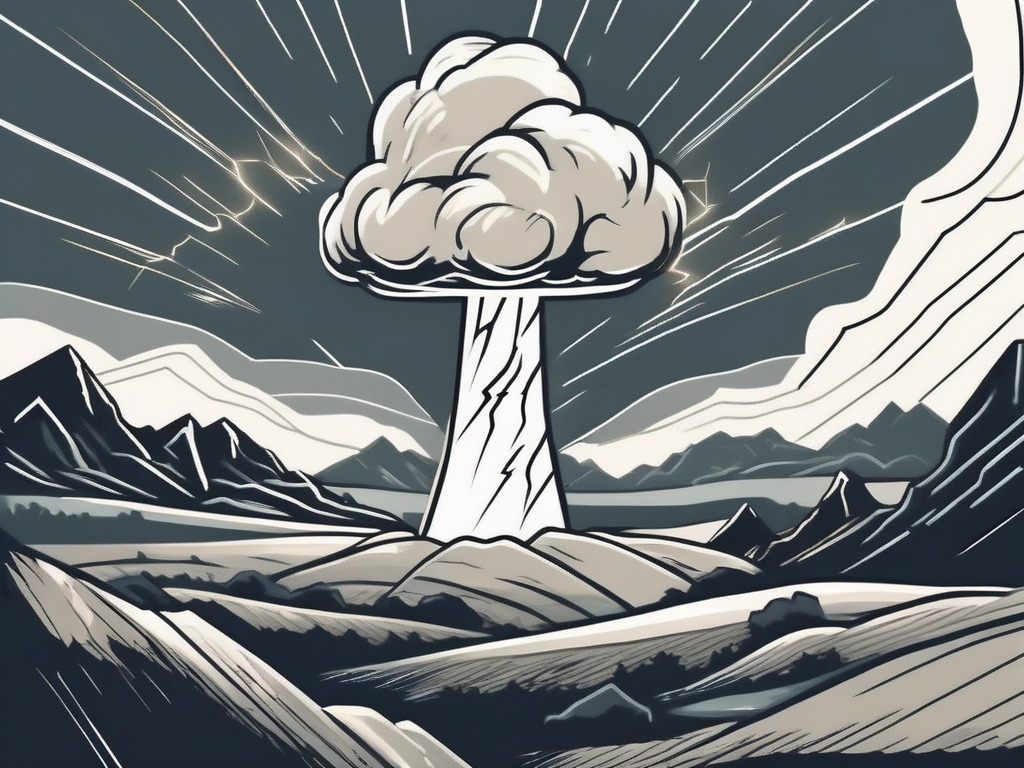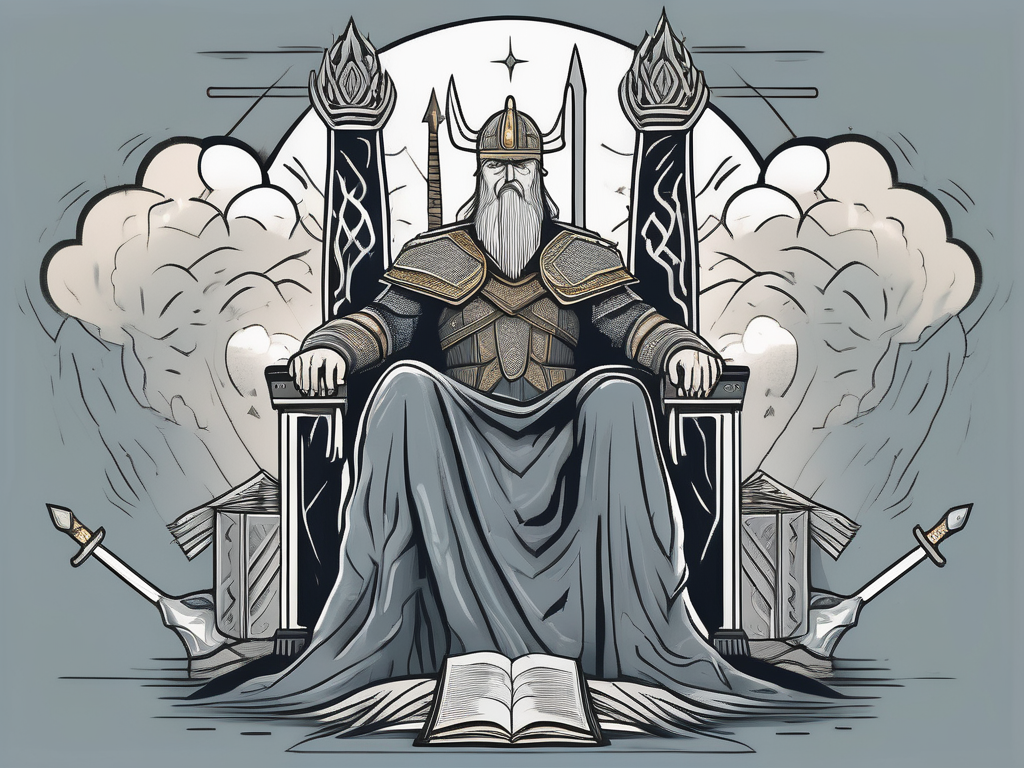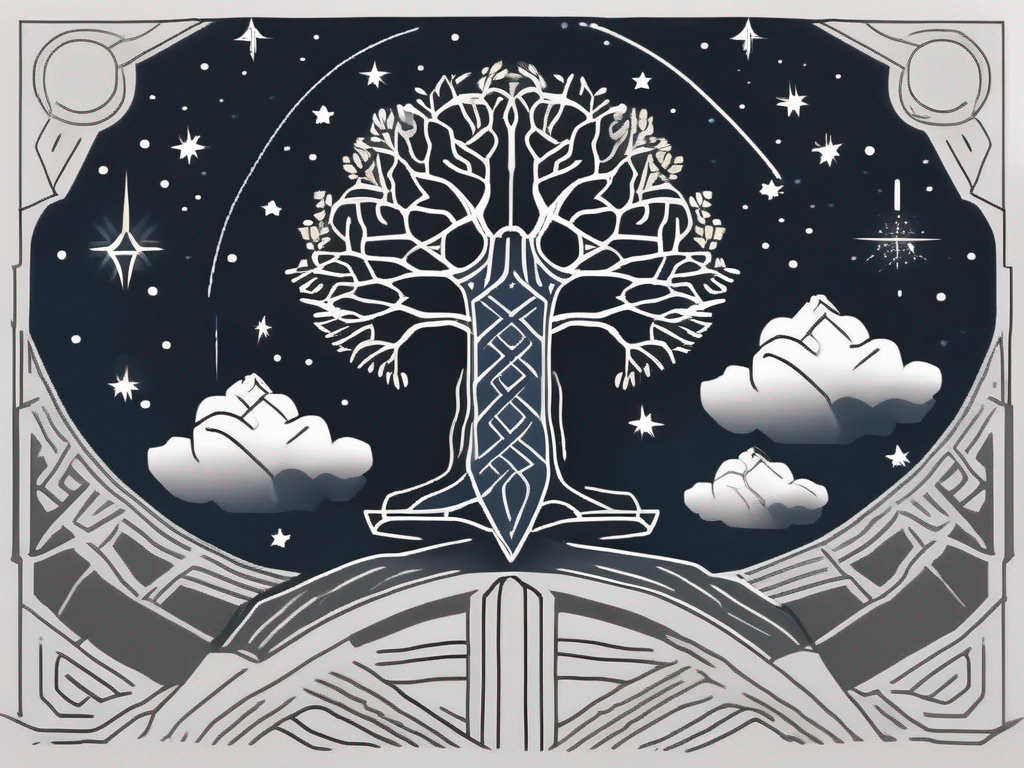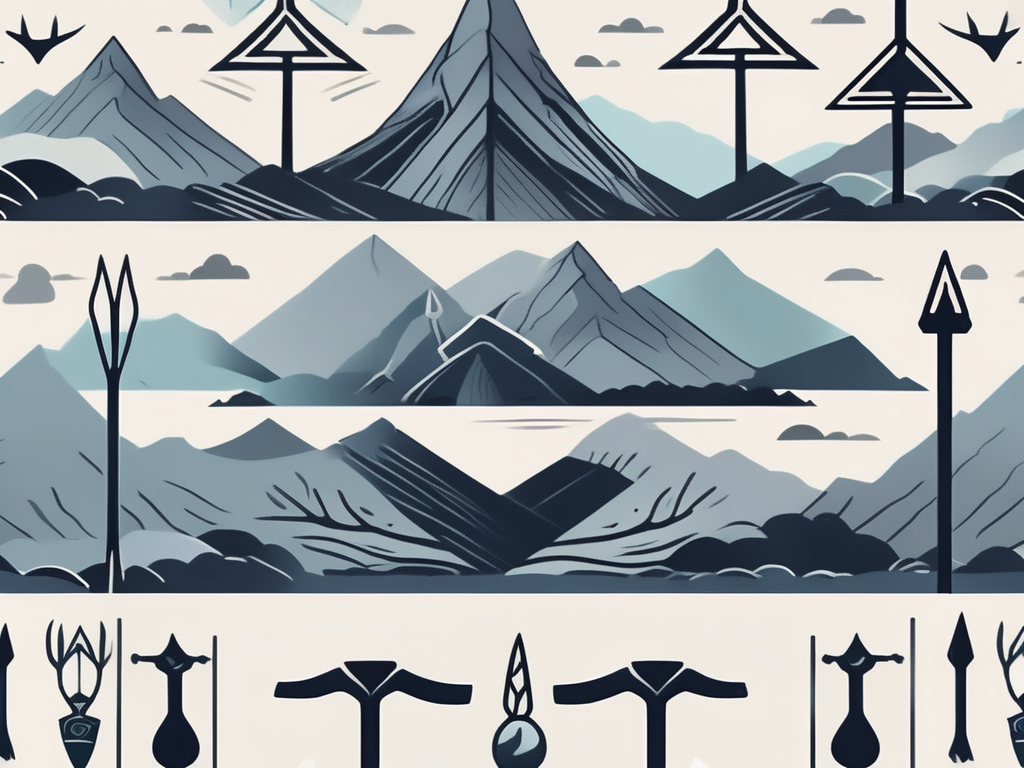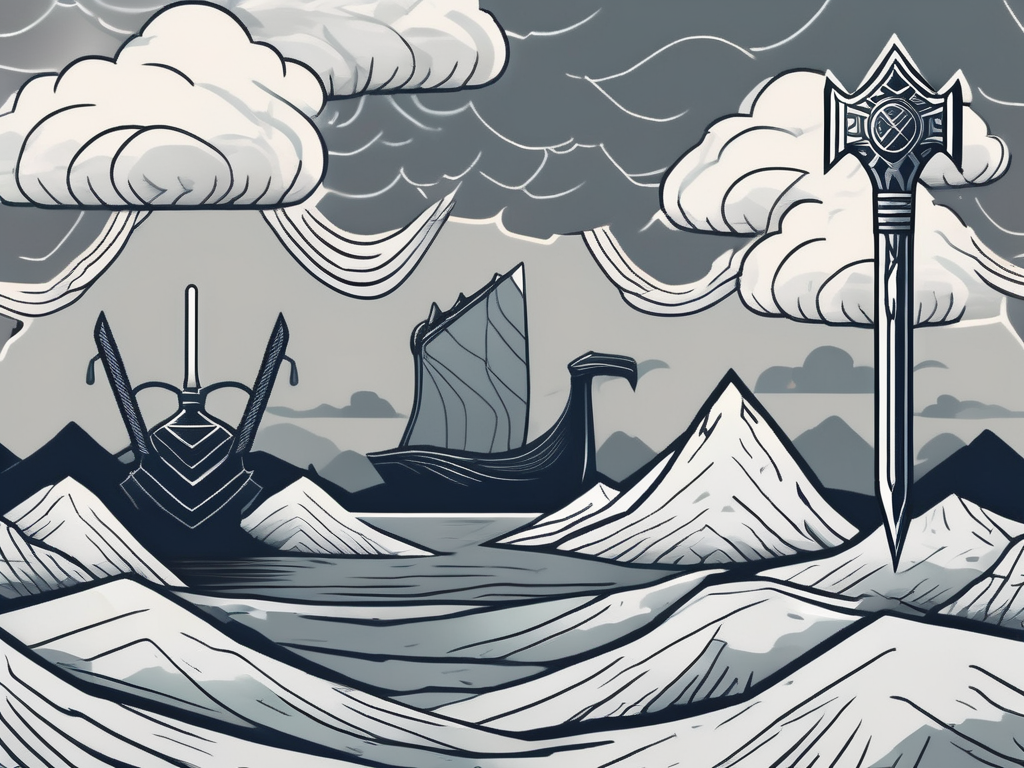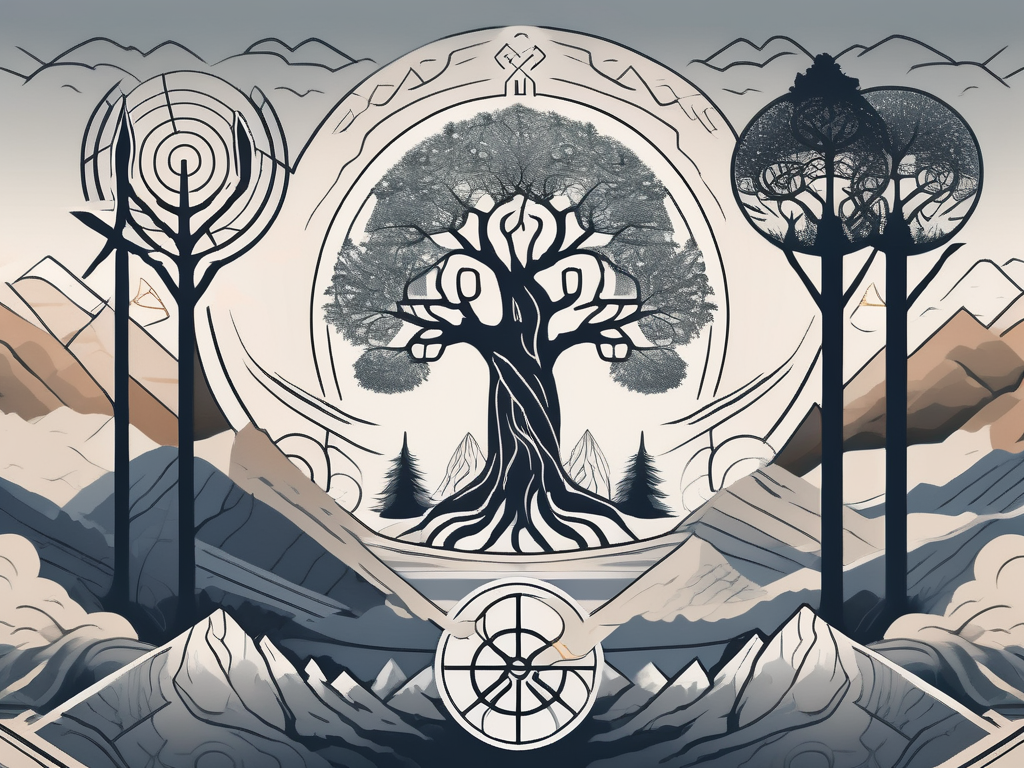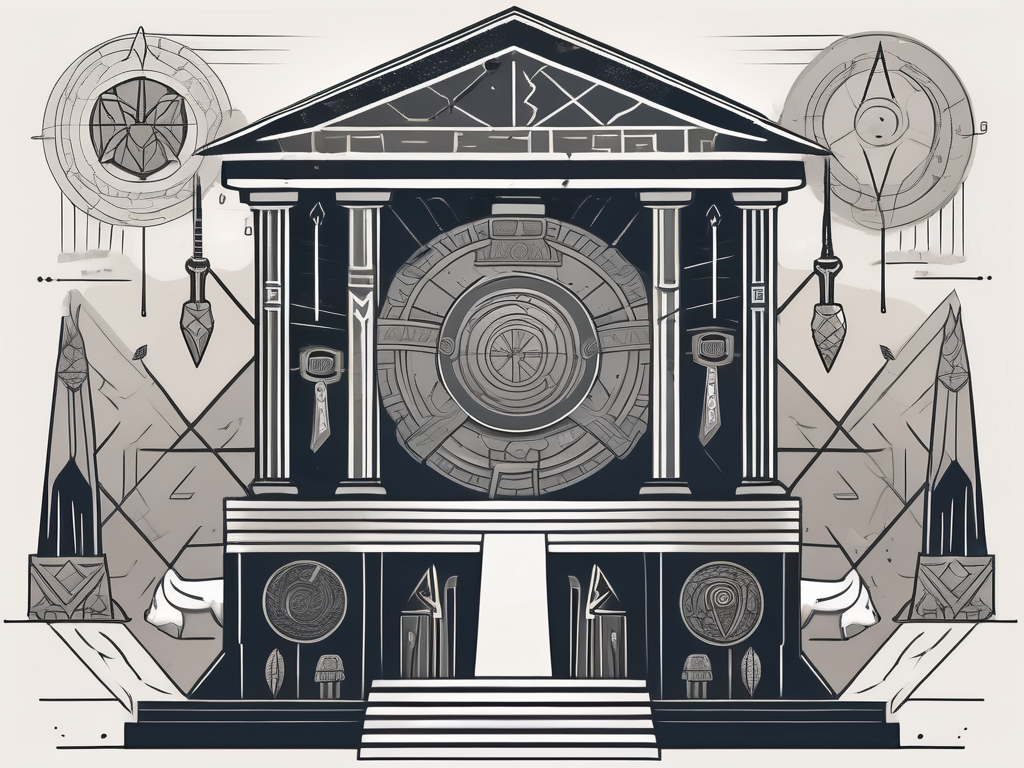Norse mythology is filled with fascinating and powerful deities, from the mighty Thor to the wise Odin. However, it is the Norse goddesses who often remain enigmatic and lesser-known. In this article, we will delve into the world of uncommon Norse goddesses, shedding light on their roles, influence, symbolism, and legacy. So strap on your metaphorical horned helmet and let’s embark on this mythological journey!
Understanding the Norse Pantheon
Before we dive into the realm of uncommon Norse goddesses, it’s important to have a basic understanding of the Norse pantheon. In Norse mythology, gods and goddesses played crucial roles in shaping the world and the lives of mortals. The gods represented various aspects of life, while the goddesses exemplified femininity, power, and wisdom.
The Norse pantheon consisted of several major gods and goddesses, with each having their own unique attributes and domains. While most people are familiar with Odin, Thor, and Loki, the goddesses often remain overshadowed. But fear not, for we are here to unveil their secrets!
The Role of Goddesses in Norse Mythology
Unlike other mythologies where goddesses were often reduced to supporting roles, Norse mythology placed a strong emphasis on the authority and power of its female deities. Norse goddesses had their own realms of influence and were seen as equals to the gods. They were not just passive figures, but active participants in the mythological narratives.
These goddesses represented various aspects of life, including love, fertility, nature, war, and much more. Let’s explore some of the lesser-known Norse goddesses and the fascinating roles they played in the mythology.
One such goddess is Sif, known for her luscious golden hair. She was the wife of Thor and represented fertility and abundance. Sif’s hair was said to symbolize the golden fields of wheat, ensuring a bountiful harvest for the Norse people. Her presence brought hope and prosperity to the land.
Another intriguing goddess is Eir, the goddess of healing. She possessed great knowledge of medicinal herbs and was often called upon to heal the wounded and sick. Eir’s gentle touch and soothing words brought comfort and relief to those in need, making her a beloved figure in Norse society.
Skadi, the goddess of winter and the hunt, was a fierce and independent deity. She roamed the frozen wilderness with her bow and arrow, embodying the strength and resilience required to survive in harsh conditions. Skadi taught the Norse people the art of hunting and provided them with the skills needed to endure the unforgiving winters.
The Influence of Norse Goddesses on Society
The influence of Norse goddesses extended beyond the realm of myth and shaped the daily lives of the Norse people. Goddesses such as Freyja, the goddess of love, fertility, and beauty, were revered and celebrated. The Norse people sought their blessings for successful marriages, bountiful harvests, and protection from harm.
These goddesses also served as role models for women, portraying strong, independent, and assertive qualities that transcended societal expectations. They embodied both beauty and strength, challenging the notion that femininity equated to weakness.
One such example is Frigg, the queen of the gods and the goddess of marriage and motherhood. Frigg was known for her wisdom and foresight, often advising Odin on important matters. She was a symbol of maternal love and protection, guiding women in their roles as wives and mothers.
Idun, the goddess of youth and rejuvenation, held the key to eternal youthfulness. Her magical apples ensured that the gods and goddesses remained forever vibrant and ageless. Idun’s presence reminded the Norse people of the importance of cherishing and preserving their vitality.
As we delve deeper into the realm of Norse goddesses, we discover a rich tapestry of divine feminine power and influence. These goddesses were not mere supporting characters, but integral forces that shaped the mythology and society of the Norse people.
Exploring Lesser-Known Norse Goddesses
While Freyja and Frigg may be more widely recognized, there is a treasure trove of lesser-known Norse goddesses waiting to be discovered.
Delving deeper into the rich tapestry of Norse mythology, we uncover the fascinating stories and divine attributes of these often overlooked deities. Let us embark on a journey to explore the realms of three remarkable goddesses: Eir, Sjofn, and Lofn.
Eir: The Goddess of Healing
Eir, the goddess of healing, was highly revered in Norse mythology. She possessed extensive knowledge of medicinal herbs, magic, and the art of healing. Norse people would invoke her name for physical and spiritual healing, turning to her in times of sickness and injury.
As the gentle touch of Eir’s healing hands brought relief to the afflicted, her serene presence offered solace and comfort. Her wisdom in the realm of medicine was unparalleled, and her remedies were believed to possess the power to restore vitality and balance to the body and soul.
Legends tell of Eir’s benevolent nature, as she would often appear to those in need, guiding them towards the path of recovery. Her compassion knew no bounds, and her influence extended to both physical and emotional healing, making her a vital figure in Norse mythology.
Sjofn: The Goddess of Love and Harmony
Sjofn, the goddess of love and harmony, was known for her ability to foster affection and understanding between individuals. She played a significant role in matters of love, whether it be romantic, familial, or even self-love.
With her gentle touch, Sjofn would weave threads of love and empathy, encouraging open communication and deep connections. Her presence reminded mortals of the importance of love and compassion in their relationships, urging them to embrace the power of understanding and unity.
Beyond romantic love, Sjofn’s influence extended to all aspects of life, emphasizing the significance of harmony and unity in communities and societies. Her divine energy resonated within the hearts of individuals, inspiring them to cultivate love and create a world filled with compassion.
Lofn: The Goddess of Forbidden Love
Intriguing and mysterious, Lofn was the goddess of forbidden love. She held the power to bypass societal boundaries and conventions, enabling her devotees to pursue love regardless of societal norms or restrictions.
Lofn’s enigmatic presence served as a reminder to the Norse people that love knows no bounds. She defied the limitations imposed by society, embracing those whose hearts and desires defied traditional expectations.
As a beacon of hope for those entangled in forbidden love, Lofn offered solace and guidance. Her divine intervention provided a glimmer of light in the darkness, empowering individuals to follow their hearts and find happiness, even in the face of adversity.
Through the tales of Eir, Sjofn, and Lofn, we uncover the intricate layers of Norse mythology, where goddesses embody various aspects of the human experience. These lesser-known deities remind us of the profound wisdom and eternal truths hidden within the realms of ancient mythology.
The Symbolism and Significance of Norse Goddesses
Norse goddesses were not just powerful beings in their own right; they also represented deeper symbolism and held significant cultural and spiritual meaning.
The Power of Femininity in Norse Mythology
Norse goddesses embodied the power and strength of femininity in a society that revered both male and female deities. They challenged traditional gender roles and showcased the multifaceted nature of women, highlighting qualities such as courage, wisdom, and independence.
Drawing inspiration from these goddesses, Norse women were encouraged to embrace their own power and agency, defying societal expectations and pursuing their dreams and desires.
The Goddesses as Symbols of Nature and the Elements
Many Norse goddesses were closely associated with nature and the elements, representing the intricate balance between humans and the natural world. Goddesses such as Skadi, the goddess of winter and hunting, personified the harsh beauty and raw power of nature.
Through these goddesses, the Norse people understood the essential connection between humanity and the environment, reminding them of their role as guardians of the earth and its resources.
The Legacy of Norse Goddesses in Modern Culture
The influence of Norse goddesses extends far beyond ancient mythology, permeating modern culture in various forms.
Norse Goddesses in Literature and Art
The captivating stories and symbolism of Norse goddesses continue to inspire countless writers, artists, and creators. Their tales can be found in modern fantasy literature, with authors drawing upon their rich mythology to construct intricate worlds and characters.
Artists have also immortalized these goddesses in stunning visual representations, capturing their power, beauty, and mystique.
The Impact of Norse Goddesses on Modern Paganism
Norse mythology has experienced a resurgence in recent decades, with many embracing the ancient pantheon as part of modern pagan practices. The goddesses, with their fierce independence and connection to nature, resonate deeply with those seeking to reconnect with their spirituality and honor the divine feminine.
Modern pagans draw inspiration from Norse goddesses, incorporating their presence and symbolism into rituals, ceremonies, and personal beliefs.
Debunking Misconceptions About Norse Goddesses
While Norse goddesses are often portrayed in popular culture as warrior women or damsels in distress, they are far more complex and diverse than these oversimplifications suggest.
Beyond the Warrior Woman Stereotype
While there were goddesses associated with battle and war, such as Freyja and Skadi, it is important to recognize that warrior qualities were just one aspect of their complex characters. Norse goddesses encompassed a wide range of abilities and interests, including wisdom, love, fertility, and healing.
It is crucial to move beyond the narrow stereotypes and appreciate the rich breadth of these goddesses’ roles in Norse mythology.
The Complexity and Diversity of Goddess Archetypes in Norse Mythology
Norse goddesses, like their male counterparts, defy simplistic categorization. They embody a wide range of archetypes, representing different facets of femininity and challenging notions of what it means to be a woman.
From nurturing healers to wise sorceresses and fierce protectors, the diversity of Norse goddesses provides a window into the complexity of the feminine spirit.
In Conclusion
The world of uncommon Norse goddesses offers a captivating glimpse into the rich tapestry of Norse mythology. These powerful and enigmatic deities played integral roles within the pantheon, society, and the lives of individuals.
Their influence and legacy can still be felt today, inspiring artists, writers, pagans, and individuals seeking to embrace their own power and agency.
So, let us not forget these extraordinary goddesses and the lessons they have to teach us, for their stories are a testament to the enduring strength of the feminine spirit.

